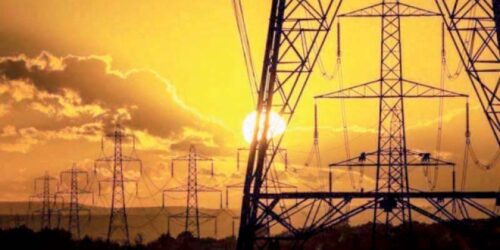The government on Monday asked the National Electric Power Regulatory Authority (Nepra) to immediately approve first part of its three-phased subsidy rationalisation plan envisaging creation of four new tariff slabs and a slight expansion in the definition of lifeline consumers to 100 units per month for gradual reduction of electricity subsidies.
Nepra conducted the public hearing on the subsidy rationalisation plan that has been agreed to with the lending agencies – the World Bank and the International Monetary Fund. Presided over by Chairman Tauseef H. Farooqi and attended by all the provincial members, the regulator was asked to restrict its current hearing to bifurcate 301-700 unit slab into four slabs of 100 units each and redefine the lifeline consumers. The mechanism will be applicable throughout the country including K-Electric.
The government team led by Additional Secretary Waseem Mukhtar said the plan on approval at this stage will not result into any tariff increase to any consumer category, but would ultimately help the government better target the subsidy to the really deserving and administered through Ehsas Programme in next two phases. The process would be completed in five years.
He reported that the prime minister had approved the summary on “subsidy reform proposal” in February this year and then the ECC and the cabinet approved three phase proposals for subsidy reform. “In the first phase, tariff structure to be modified/adjusted to ensure that the most vulnerable residential consumers are identified through electricity consumption so that they are fully or partially protected from future price increases,” Nepra was explained.
The small residential consumers having maximum of last 12 months and current month’s consumption of 100 units would be redefined and given two rates ie Rs3.95 per unit for 50 units and Rs7.74 per unit for 100 units. A new category of protected consumers is to be created – those consuming consistently 200 units per month for past six months.
Also, the category of 301-700 units would be divided into four — 301 to 400, 401 to 500, 501 to 600 and 601 to 700 units per month. Their existing tariff would remain unchanged for the time being but adjusted when the government takes a policy decision for tariff adjustment. Each of these slabs would continue to get the previous slab benefit of first 300 units.
It was explained in a broad reference that about 8 million consumers would exit the subsidy regime over the next two phases. The chairman Nepra suspected that if the regulator approved first phase, the government may be seen implementing the second phase tomorrow that would impact the consumers but was assured that even the next phase would also have to be cleared by the regulator itself.
Under the policy guidelines already approved by the government, the creation of new slabs in tariff would reduce the power subsidy by around Rs42 billion per annum. At present, 24.5 million (99pc) electricity consumers are getting subsidy of varying degree. For example, the existing system protects 84pc consumption below 300 units representing 89pc domestic consumers which are about 22 million.
However, it will be limited to 13.9 million consumers, which will be only through the Ehsaas social welfare programme, following the implementation of reforms and to be paid in cash. It was reported that almost 19 million consumers (76pc meters) fell in the protected zone just because their consumption fall below 200 units in winters.
Officials said the purpose of making new protected slab of up to 200 units was to ensure subsidy to the really deserving candidates. “We want to link the subsidy to the Ehsas programme”, officials of the Ministry of Energy said.
During the public hearing, the Ministry of Energy reported that Neelam-Jhelum Surcharge had been withdrawn but when Nepra questioned about the notification the government had issued to end surcharge, the official said they would have to recheck. Officials further said that lifeline users with 50 to 100 units per month consumption will not be subject to surcharges or power surcharges.







